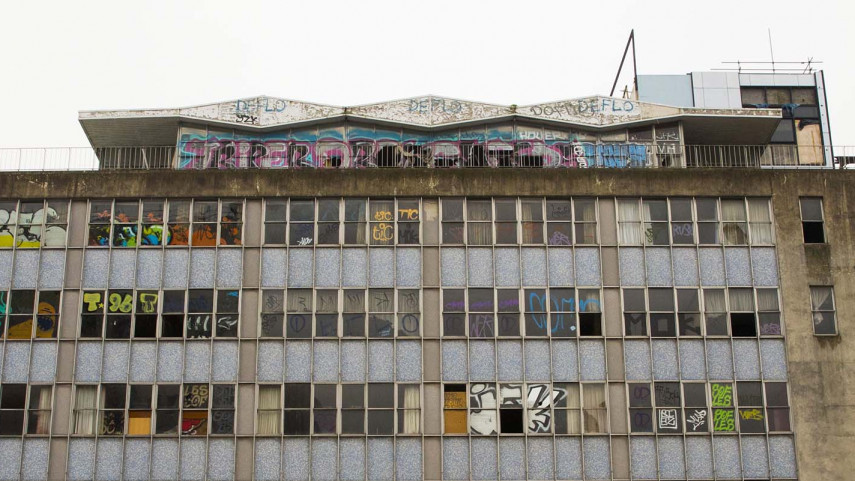
Plan for tackling derelict sites mapped out

Share this story
A plan for tackling derelict sites that are considered a barrier to the regeneration of Christchurch’s city centre will be outlined at this week's Council meeting.
The plan of action has been put together by Council staff to address concerns about the sites, to improve investor confidence and to create a more positive impression of parts of the central city.
 This derelict building in Hereford St has become a target for taggers.
This derelict building in Hereford St has become a target for taggers.The sites the Council is particularly concerned about are:
- Those where buildings have been left unoccupied and have fallen into a state of disrepair.
- Those which remain cordoned off because the buildings are considered structurally unsafe and a potential risk to the public. In some cases the cordons around those buildings are physically encroaching onto public roads and footpaths.
A report prepared for this week’s Council meeting says there is a “stubborn group of around 30 buildings and sites’’ that are physically, or perceptually, seen as a barrier to successful regeneration.
While most of those sites are privately owned and technically not the Council’s responsibility, the report says the Council needs to intervene for the benefit of the city, its residents and visitors.
“The city needs to be able to move on from its post-disaster state and present to the world the rejuvenated gateway city which people want to visit and travel through as part of their South Island experience,’’ the report says.
It goes onto outline the framework and three phase approach that Council staff will take to tackle the derelict sites and buildings.
The first phase begins with the Council actively engaging with the landowners and providing guidance and advice on future development options.
The second phase involves putting more pressure on the landowners to do something with their sites by fairly applying existing fees and charges for the use of public land to sites where exemptions have previously been made.
The third and final phase – which will only be used as a last resort – involves joint action by agencies with enforcement and land acquisition powers.
